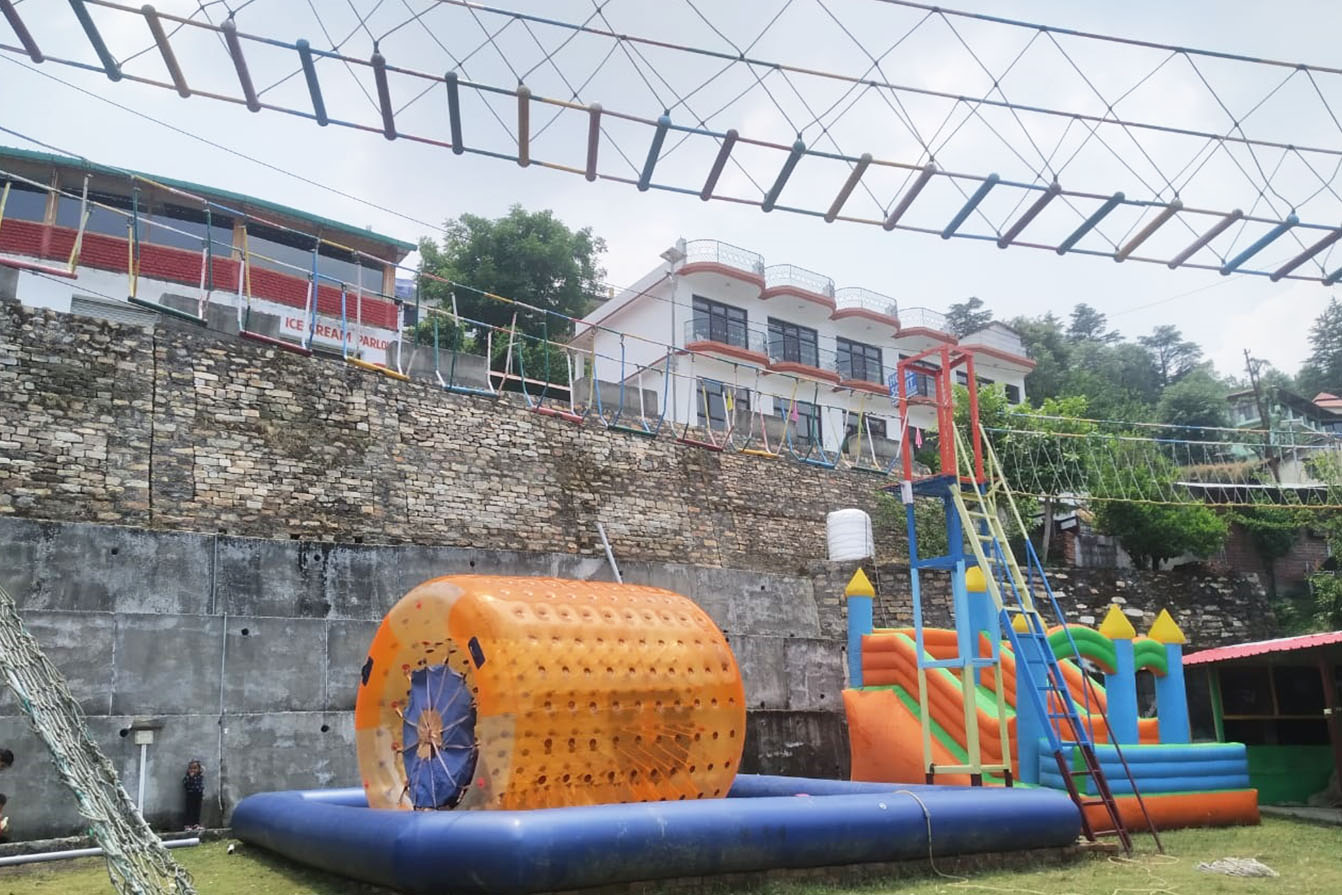
A climbing wall is an artificially constructed wall with grips for hands and feet, usually used for indoor climbing, but sometimes located outdoors. Some are brick or wooden constructions, but on most modern walls, the material most often used is a thick multiplex board with holes drilled into it. Recently, manufactured steel and aluminum have also been used. The wall may have places to attach belay ropes, but may also be used to practise lead climbing or bouldering.
Each hole contains a specially formed t-nut to allow modular climbing holds to be screwed onto the wall. With manufactured steel or aluminum walls, an engineered industrial fastener is used to secure climbing holds. The face of the multiplex board climbing surface is covered with textured products including concrete and paint or polyurethane loaded with sand. In addition to the textured surface and hand holds, the wall may contain surface structures such as indentions (incuts) and protrusions (bulges), or take the form of an overhang, underhang or crack.
The simplest type of wall is of plywood construction, known colloquially in the climbing community as a 'woody', with a combination of either bolt-on holds or screw on holds. Bolt-on holds are fixed to a wall with iron bolts which are inserted through the hold, which will have specific bolt points, and then fixed into pre-allocated screw-threaded holes in the wall. Screw-on holds are, by contrast, usually much smaller, owing to the nature of their fixing. These holds are connected to the wall by screws which may be fastened anywhere on the wall's surface. Some other types of walls include slabs of granite, concrete sprayed onto a wire mesh, pre-made fiberglass panels, large trees, manufactured steel and aluminum panels, textured fiberglass walls and inflatables.






